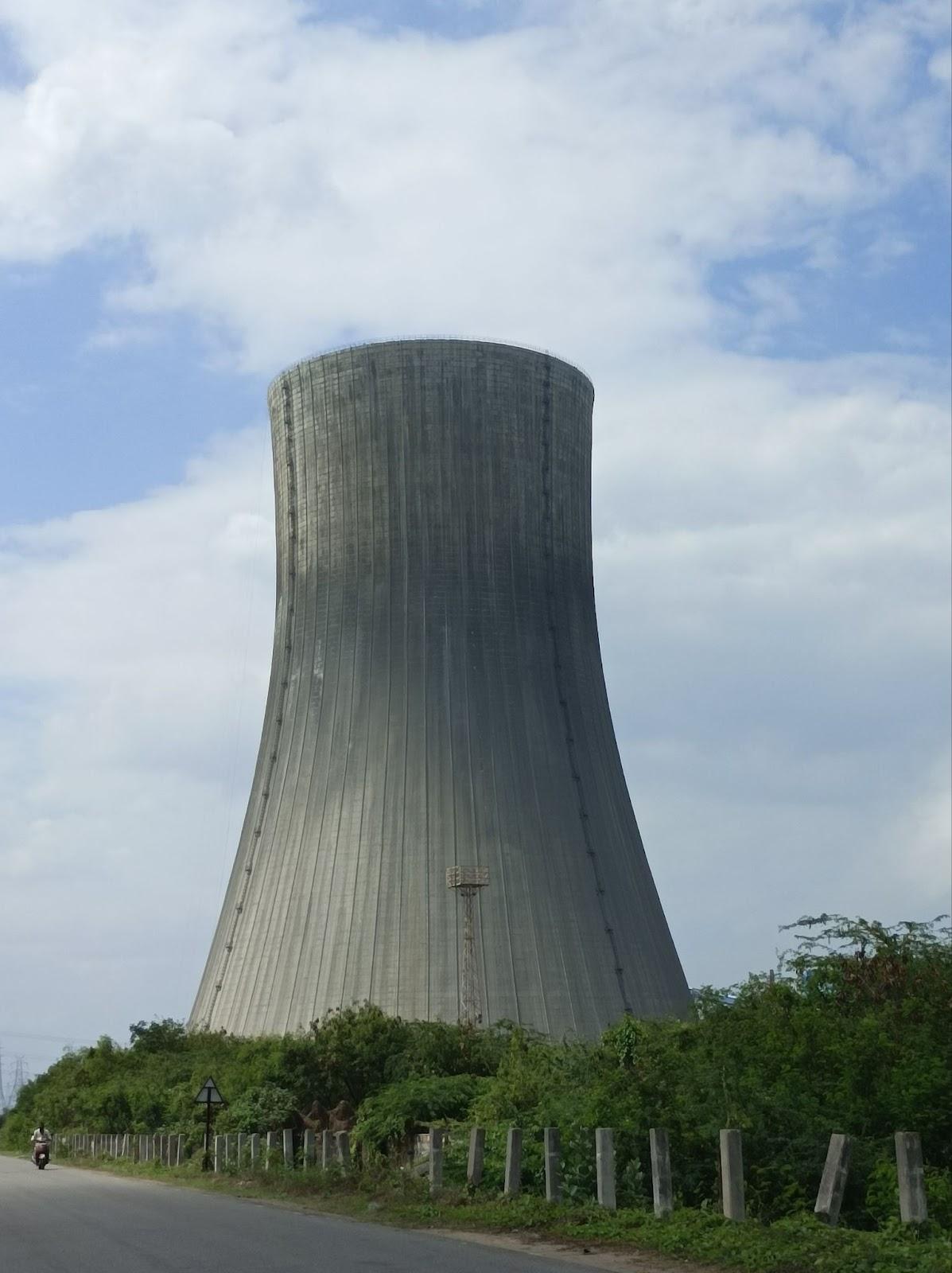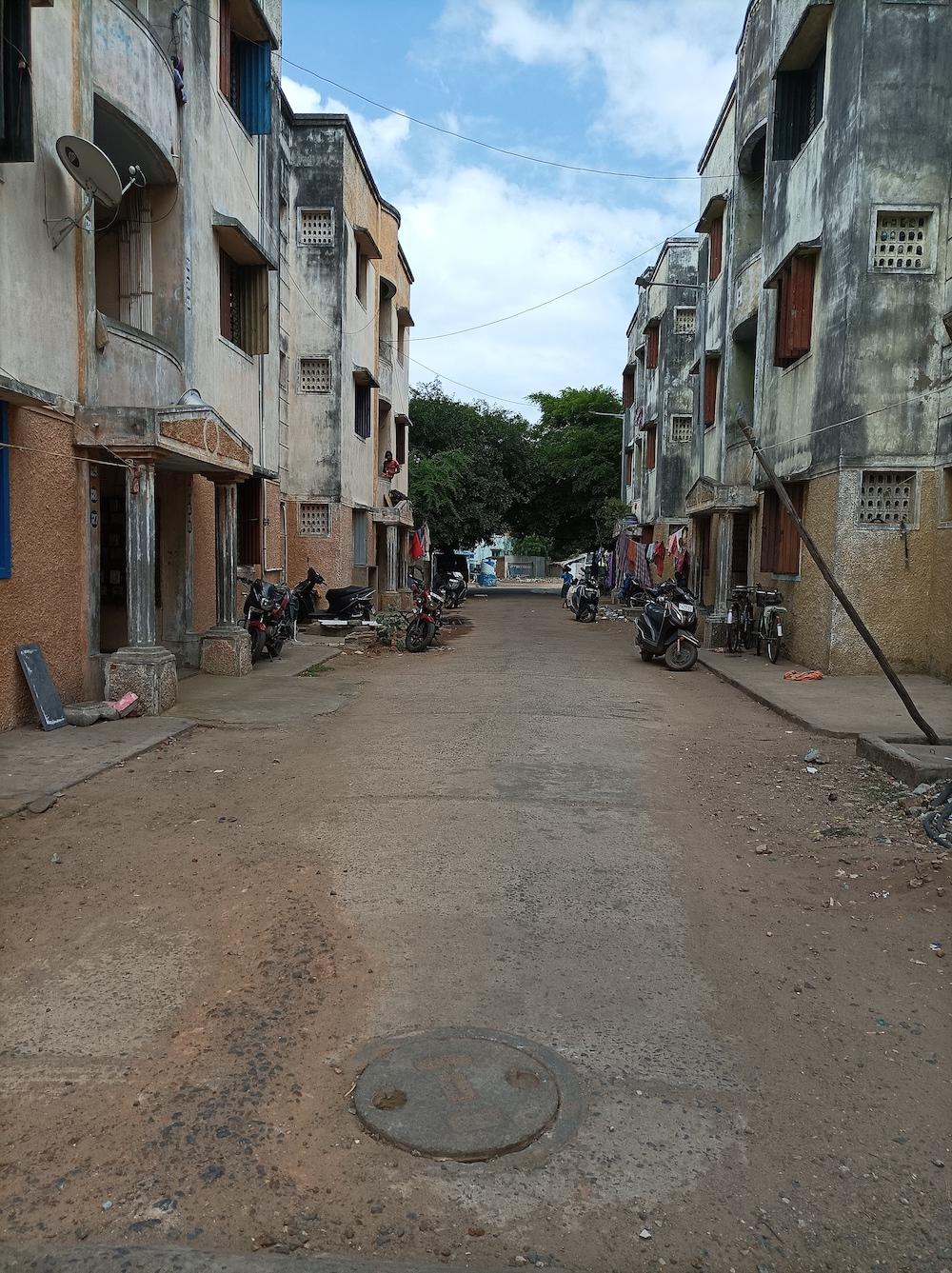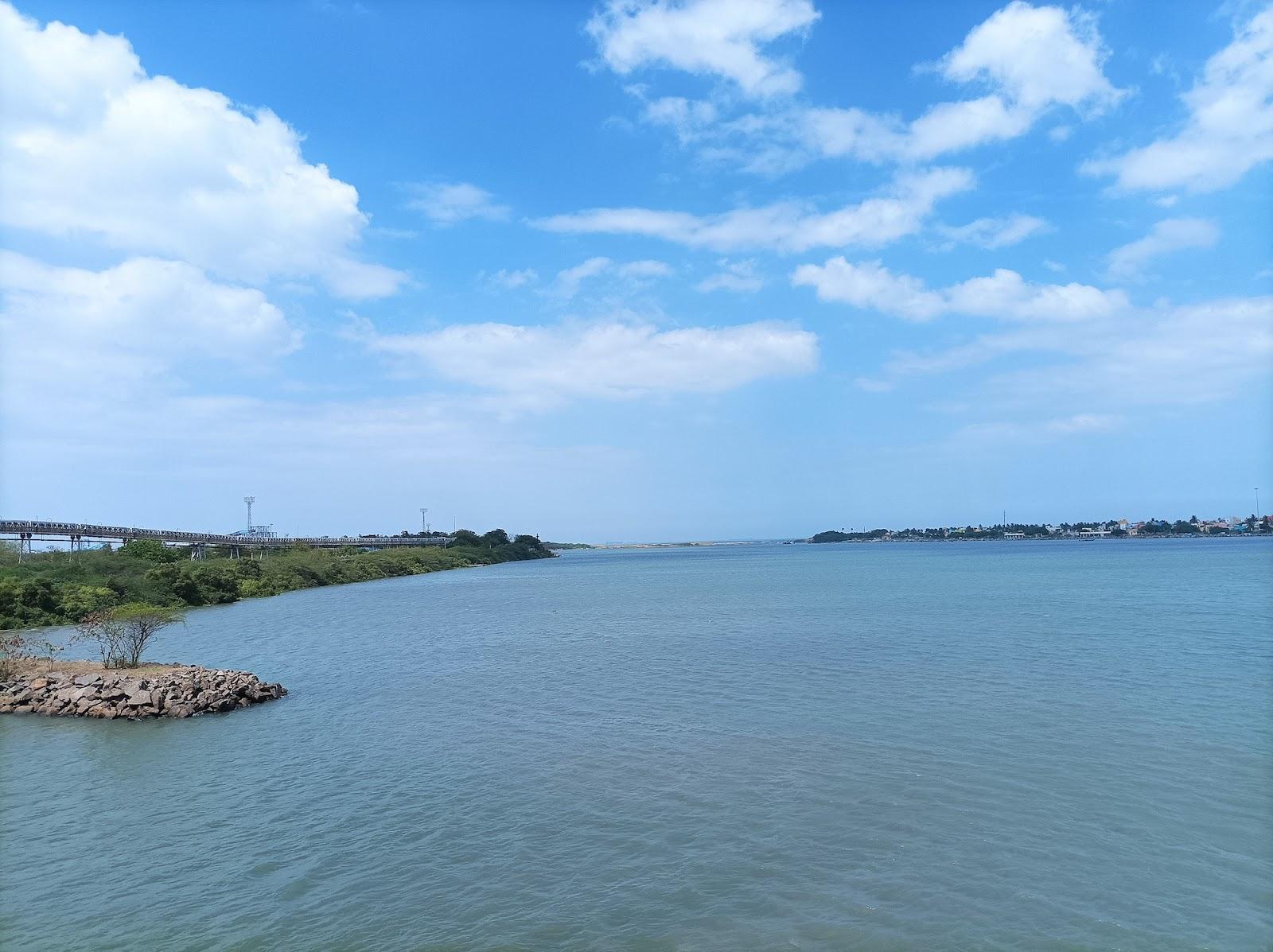‘The Playgrounds are No Longer Safe’
Tamil Nadu trades cancer and respiratory illness for electricity
North Madras, over the years, has become synonymous with sports. Football, for instance, had become so popular in the region that North Madras is otherwise called Mini Brazil, owing to the effect of the sport on the lives of children here, and how it has become an escape route from poverty, just like in Brazil. Boxing, swimming, and kabaddi have also gained huge fandom here. The region has produced several national-level sportsmen and its association with sports is widely known. But circumstances have changed now. For the worse.
It was about 5 pm in the coastal town of Ennore, North Chennai (Madras). R.L Srinivasan, a kabaddi coach with 15 years of experience stood by the shore, giving out instructions to his team as they do their daily warm-ups. Within a few minutes, you could see several of the kids gasping for breath. This wasn’t always the case, Srinivasan recalled. “Athletes were able to train for hours together without getting tired. It’s not the same with the kids these days. They just don’t have the stamina.”
The local fishermen here seemed lost in their thoughts as they anchored their boats or sat around mending their nets. Their kids have the same issues and they wondered why their children were so much weaker than they were at their age. But they know what one of the reasons could be. Towering next to them is the North Chennai Thermal Power Plant. “You see the smoke coming from there? It has been poisoning our air and water since it was established,” said one of the fishermen.
Srinivasan added, “These aspiring athletes you see here, they have the talent it takes to reach great heights, they have the drive, but how can they achieve it if their health is jeopardized?”

Ashwini, mother of an eight-year-old girl and an athlete herself says, “We don’t feel safe here. I have my own house, but I want to move for my daughter’s future. I can clearly tell that she is weaker than other kids her age. She cannot run for long, she starts gasping.”
“There is fly ash slurry everywhere, you can see the layer of ash everywhere, on our clothes, in our food, even in the water here,” says another fisherman.
“When children go swimming these days, the water is choked with sludge from petrochemical industries and fly ash from the coal-filled thermal power plants. The playgrounds are no longer safe,” says Srinivasan.
Pollution has harmed children’s right to play. Take the village of Sepakkam for instance. About 60 homes here are located in close proximity to TANGEDCO's coal ash dump. The toxic waste flows into the neighbourhood through leaking pipelines and pollutes the air. There are particular spots where the coal ash has congealed and children jump and play on it as if it were a trampoline. Little do they know the dangerous impact it could have on their health. According to studies, airborne ash can be harmful to a child's lungs and cause detrimental effects on their physical, cognitive and emotional development.
Studies also suggest that the upper respiratory tract is first to be affected by air pollutants and since children under the age of five don’t have their pulmonary tract fully developed yet, they are more susceptible to air pollutants.

Ennore and the surrounding areas in North Chennai are known pollution hotspots. The Tamil Nadu Generation and Distribution Corporation (TANGEDCO) has installed 1,830 megawatts of coal-fired electricity generation capacity in Ennore, and NTECL, owned by the National Thermal Power Corporation operates a 1,500 MW power plant across the Ennore backwaters. The region is also home to more than 34 large red-category factories and also houses Chennai’s largest garbage dump.
And if that weren't enough, there are proposals for at least four more projects to meet the city’s growing electricity demand. A recent study conducted by the Health Energy Initiative, the Save Ennore Creek Campaign and the School of Public Health at the SRM Institute of Science and Technology found that 2,120 MW of new generation capacity, owned by TANGEDCO, is at an advanced stage of construction, and two units of 660MW, namely the Ennore Thermal Power Station (Expansion) and Ennore Thermal Power Station (Replacement) were at the pre-licensing stage.
According to the study, the region also suffers the busy movement of diesel-powered heavy vehicles to and from the port and also has an oil refinery.
That’s not the only problem, however. Ennore, with its large cluster of toxic industries and polluted air, has a higher than average proportion of marginalised communities with other vulnerabilities still living in the area. The groups’ study found that Schedule Caste, Schedule Tribe and Most Backward Class communities constitute more than 37% of the people in the vicinity of the Ennore Thermal Power Station.
“That’s why many of the children here turn to sports. The rugged lifestyle and the mental strength they acquire as they face harsh situations at home naturally make them fit for sports, be it physically or mentally. They don’t feel education would empower them; they resort to sports as a means to get out of here and build a better future for themselves. And many have succeeded in doing that over the years. But this generation is facing hurdles like health issues, especially respiratory illnesses.”

According to Srinivasan, “There are several national-level athletes from here. They work for the Tamil Nadu Electricity Board, and represent Tamil Nadu at the national level. Boxing has also seen a lot of promising players from here, many of who have won at national level tournaments. Financial difficulty or lack of sponsorships is one problem, but the thermal project, in my opinion, poses a bigger risk. For years, the children who grew up here would play out in the open and go swimming every day… But now the air and the water are polluted. The emissions are ten times more than the government-approved levels and it has entered the oceans here too.”
“Breathing this air for years has made a big impact on the kids here. It is slowly destroying their lungs. A majority of children under the age of ten have wheezing problems. When someone new enters our area, they can immediately feel the difference in the air quality, their eyes will start to burn. But we are used to it, our eyes don’t burn anymore. That is not a good thing though.”
He added, “In these situations, our kids are not able to perform properly, they don't have the stamina. Even if they happen to perform properly here, when they compete with teams outside they cannot endure it. So they get disqualified. The next generation will face even more health challenges. But these children don’t know it is because of the thermal plant. The government doesn’t deny the damage it is doing to the people here, they accept it, but only whenever there is a case in court. They keep saying they will do something about it, but they never do.”
“It has been about seven years since a case was lodged saying fly ash slurry was seen everywhere, reflecting the poisonous nature of the air and water. But since it is the government [public] that has to pay the fines, the officials don’t care. They pay fines and continue doing what they want to do. There’s no permanent solution.
“The last time a case was registered, a commission was set up headed by Shantasheelan of the IAS, and an expert committee was formed with people from IIT Madras and other reputed institutions. They took samples of the water, prawns, sand, etc to see how much impact pollution has had on the water quality. They found that the water has been impacted badly, thereby affecting the food chain and the people who consume sea products. Children were affected especially.”
“In North Chennai, community life is prominent. The children always play together and they play a lot. We found out that almost all the children are feeling tired quickly, can’t run for too long, their physique is lean, they catch common flu too often, and have wheezing too.”

Srinivasan says he has now sent one of his teams to another coach so they can have better opportunities. “I have been coaching for 15 years. I’ve been noticing that earlier if we give them warm-ups for an hour or more, they could endure how much ever training that follows, but these days the kids’ capacity has reduced so much, they cannot endure more than one hour. It’s not that they are lazy. It’s very obvious that they are running out of breath and feeling weak. That’s why I decided to send the kids elsewhere.
“These poisonous gases affect their immunity too, so a lot of my trainees keep falling sick often. Both the government and industrialists keep telling us that they are doing this for our development, that it will create employment opportunities, that the GDP will go up, a lot of other things that we don’t understand. But what’s the point of all the development if it is at the cost of those who live here. What’s the point if the rest of the state benefits from this and we have to pay the price?”
“In my opinion, the officials who work at the thermal plant need to be held accountable. Right now, they don’t care whether they follow the rules or not because it will not affect them in any way. The fines are not paid by them. So they don’t care. Even if they have to pay crores as penalty they wouldn’t mind. The officials need to be held accountable. They need to be fined individually so that there is more strict monitoring of the emissions.”
“These are all clearly mentioned in the agreement before the plant was constructed here, but after it was constructed, none of these terms of the agreement were followed. People have been fighting against this for years, but after so many years of their protests not yielding any results, even they have started to give up. The court does nothing but gives the government a penalty. Whenever people protest, they are called anti-nationals, but why can’t you just listen to our genuine concerns?”
“We have some demands: that the emissions should be controlled, that people who have been affected all these years should be compensated and that no further industry should come up here. We need to be given more employment opportunities and health care. There needs to be a proper official study of the health impact of this power plant.”
The only study that was conducted, referred to above, found that children under five have been impacted by respiratory illnesses. The report was submitted in court but the government has taken no action yet. The study found that:
. 130 children (63%) reported having experienced one or more symptoms in the past month
. 82 of 128 girls (64%) reported having experienced one or more respiratory symptoms in the past month
. 48 of 79 boys (61%) reported one or more symptoms
. Nasal congestion and running nose were the most frequently reported symptoms with 99 children (48%) reporting it; 82 children (40%) reporting nasal congestion; 35 children (17%) experienced dry cough
. 45 children (22%) reported having experienced 2 symptoms in the past month; 27 children (13%) experienced 3 symptoms.
The study found that respiratory illness rates were highest in the areas of Arunodhaya Nagar and Kattukuppam. All 13 children surveyed in Arunodhaya Nagar reported one or more symptoms of respiratory infections in the 30 days preceding the survey, while 92% (32 of 37 children surveyed) had been sick with one or more respiratory symptoms in the preceding month.

The study confirms the findings of another report by the high-level Joint Expert Committee appointed by the National Green Tribunal.
“A November 2021 report submitted by a Joint Committee to the National Green Tribunal headed by IAS Santha Sheela Nair found that particulate emissions just from one source – North Chennai Thermal Power Station Stage I – had contributed a pollution load in excess of the carrying capacity of the local airshed for that pollutant… An April 2022 report of a high-level Joint Experts Committee set up by the National Green Tribunal found high cancer and non-cancer risk among adults due to exposure to cadmium and lead, and that the risk was far higher among children.”
“The report examined the risk of increased incidence of cancer and non-cancer disease as a result of exposure to toxic metals such as cadmium, chromium, lead and copper. It found that risk of non-cancer disease or hazard index was very high for Ennore area children exposed to lead and cadmium and ranged between 3.36 and 5.01 respectively, as compared to a HI of 1 for a healthy population.
“Cancer risk for Ennore area children exposed to lead, chromium and cadmium was very high and ranged between 1.06 in 10,000 for lead, 1.26 in a 1000 for chromium and nearly 4 in a 1000 for cadmium. That is more than a 1000 times higher risk than levels of concern for exposure to cadmium and chromium. Cancer risk greater than 1 in a million is internationally accepted norm for deciding level of concern.”
The authors of the study suggested that both these reports point to a need for “deeper investigation into pollution and health among the residents living around the industrial clusters of north Chennai.” They said, “The high levels of morbidity, particularly of respiratory ill-health among children suggests that the local airshed cannot accommodate any additional pollution. Rather, the studies, including this study and the reports of NGT expert committees, highlight the need for aggressive corrective action to clear up the airshed by reducing pollution and regulating sources of pollution.”
There are many parents who name their children after international football stars like Messi and Neymar here. Everyone dreams about becoming the next star. In fact, it was just in 2018 that an all girls football team from Chennai, which included many from North Chennai was sent to Moscow to participate in the Street Child World Cup, ahead of the Fifa World Cup in Moscow. There are several others training to bag similar opportunities. But can the next generation of aspiring sportsmen and sportswomen afford to fly the same dreams? Funnily enough, the answer lies in how efficiently the pollution crisis in their backyard is managed.






